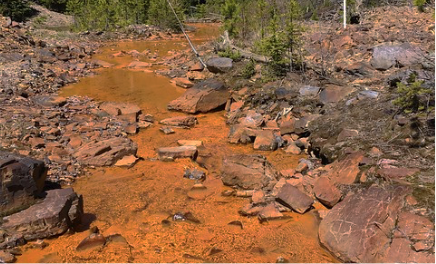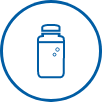Water samples are collected just below the stream surface to measure water chemistry and determine if toxins are present. Bacteria samples are also collected near the stream bank, where people are likely to be exposed while swimming or fishing. All samples are sent to laboratories for analysis.
How are these data used?
Water samples are used to collect data for four chemical and two human health indicators.

Acidification is measured by testing for acid-neutralizing capacity (ANC), the ability of a water body to reduce the effect of a strong acid. Sufficient ANC in surface waters will prevent large changes in pH levels. Some fish and macroinvertebrates are acid-sensitive and can only tolerate small changes in acidity.
Where are acidification samples collected?
samples at the midpoint
of the sample reach.

To learn more, see the
NRSA Field Operations Manual.




